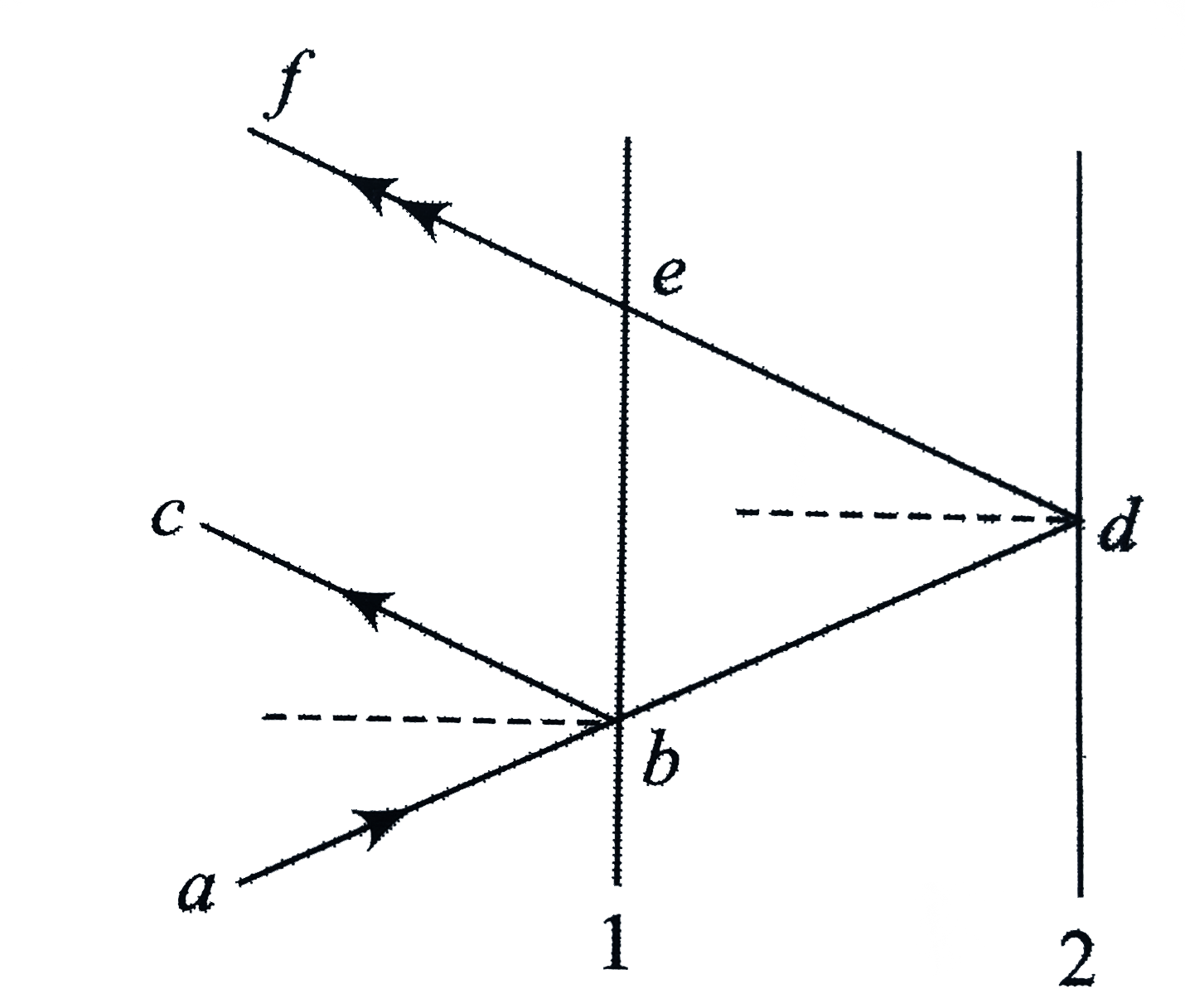A plate is kept in front of a beam of photons. The plate reflects 40% of the incident photons and absorbs the remainder. If the plate absorbs energy at a rate 1200J−1s, find the net force acting on it.
Energy incident on the plate =1200×10060=2000Js−1
nhc=2000 …(i)
Initial momentum of photons =nhvc
Final momentum of photons
=40100×nhvc=0.4njvc
Force acting on the plate
=Rate of change of momentum
=0.4nhvc−(−nhvc)=1.4nhv3×108 ... (ii)
Substituting the value of nhv from Eq. (i) in Eq. (ii), we get the force acting on the plate.
Topper's Solved these Questions
- BOOK - CENGAGE PHYSICSCHAPTER - PHOTOELECTRIC EFFECTEXERCISE - Exercise 3.28videos
PHOTOELECTRIC EFFECT
- BOOK - CENGAGE PHYSICSCHAPTER - PHOTOELECTRIC EFFECTEXERCISE - Subjective16videos
PHOTOELECTRIC EFFECT
- BOOK - CENGAGE PHYSICSCHAPTER - PHOTOELECTRIC EFFECTEXERCISE - Examples8videos
PHOTOELECTRIC EFFECT
- BOOK - CENGAGE PHYSICSCHAPTER - NUCLEIEXERCISE - QUESTION BANK59videos
NUCLEI
- BOOK - CENGAGE PHYSICSCHAPTER - RAY OPTICSEXERCISE - DPP 1.612videos
RAY OPTICS
Similar Questions
A narrow monochromatic beam of light of intensity I is incident on a glass plate. Another identical glass plate is kept close to the first one and parallel to it. Each plate reflects 25% of the incident light and transmits the remaining. Calculate the ratio of minimum and maximum intensity in the interference pattern fromed by two beams obtained after reflection from each plate.
View Solution_E01_107_Q01.png)
A narrow monochromatic beam of light of intensity I is incident on a galss plate as shown in figure. Another identical glass plate is kept close to the first one & parallel to it. Each glass plate reflects 25% of the light incident on it % transmits the remaining find the ratio of the minimum & the maximum intensities in the interference pattern formed by the two beams obtained after one reflection at each plate.View Solution
Knowledge Check
- Question 1 - Select One
A parallel beam of the light is incident normally on a plane surface absorbing 40% of the light and reflecting the rest. If the incident beam carries 10 watt power, find the force exerted by it on the surface.
A3.2×10−8NB3.2×10−7NC5.12×10−7ND5.12×10−8N - Question 2 - Select One
What happens to the fringe pattern if in the path of one of the slits a glass plate which absorbs 50% energy is interposed?
AThe bright fringes become bright and dark fringes become darkerBNo fringes are observedCThe fringe width decreasesDNone of the above
A narrow monochromatic beam of light of intensity 1 is incident on a glass plate as shown in figure Another identical glass plate is kept close to the first one and parallel to it. Each glass plate reflects 25% of the light incident on it and transmits intensities in the interference pattern formed by two beams obtained after one reflection at each plate.
 View Solution
View SolutionA light photon of wavelength λ0 is absorbed by an atom of mass m at rest in ground state. The atom is free to move. The atom after absorbing the incident photon, emits another photon in direction opposite to that of the incident photon and returns back to its ground state. In the process the atom acquires a kinetic energy k. Find λ0 in terms of k and m.
View SolutionA parallel beam of white light is incident normally on surface which absorbs 70% of the incident light and reflects the rest. If incident beam has power of 40 W , then what will be the magnitude of force exerted by the light on this surface ?
View SolutionAn atom absorbs a photon of wavelength 500nm and emits another photon of wavelength 700nm. Find the net energy absorbed by the atom in the process.
View SolutionA light source emits a parallel beam of light of power 20 W. Wavelength of the light is 600 nm and it is incident on a perfectly absorbing surface . Find the number of photons absorbed by the surface per second and the total force exerted on the surface.
View SolutionA planar source emits a parallel beam of light of power 20 W.Wavelength of light is 600 nm and is incident on a perfectly absorbing surface. Find the number of photons absorbed by the surface per second and the total force exerted on the surface .
View Solution

